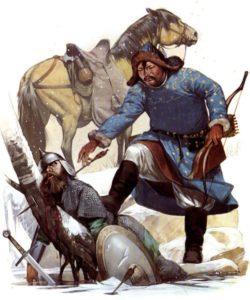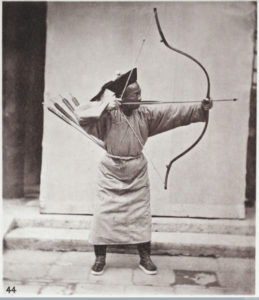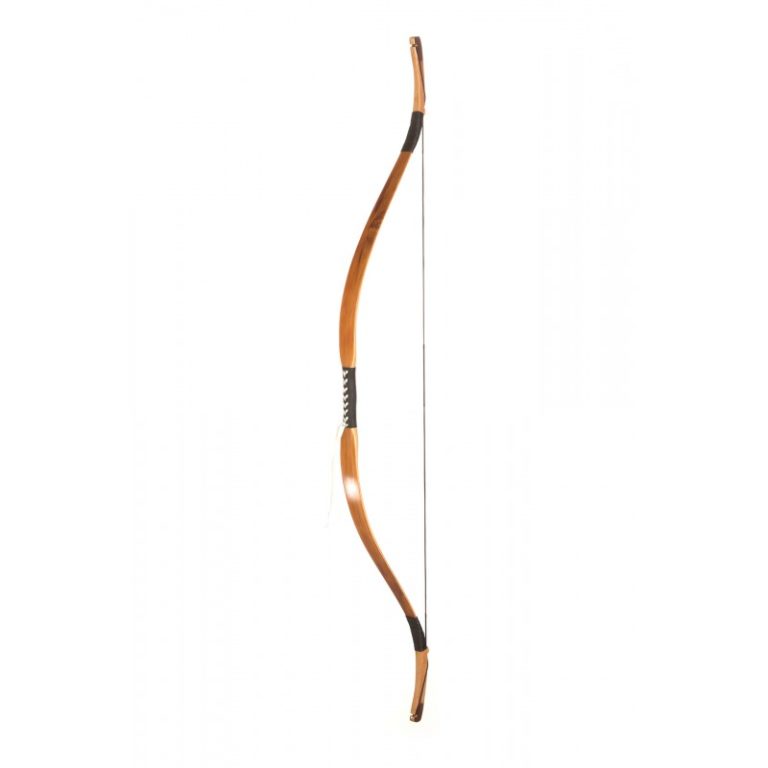Mongol Bow
The Mongol Bow
The Mongols storming out of Central Asia carved out the largest land empire in the world. United under their leader Ghengis Khan, the Mongols proved nearly unstoppable in their conquests. Their empire stretched across Eurasia, from the Sea of Japan in the East to Central Europe in the West and from Siberia in the North to the Indian subcontinent. The main weapon used to accomplish this was the Mongol bow. Nomadic life in the harsh and unforgiving steppe preconditioned the hardy Mongolians for military success. Horsemanship and archery being essential for survival as herders and hunters in the vast grasslands of Mongolia. Children were brought up to ride horses and master the Mongol bow from a very early age.

The ingenuity of Mongolian generals and the use of horse and bow in battle established the Mongols as a world power. The Mongol bow belonged to the Asian composite bow tradition because the bamboo or wooden core had sinew on the back and horn on the belly, and animal glue (from fish bladders) held these layers together. As the bow is drawn, the horn on the belly compresses in contrast to the sinew on the back of the bow which stretches. This layering of materials, as well as the curvature of the Mongolian bow, embodied it with great efficiency and power. Mongols warriors drew their bows with their thumbs, while the index and middle fingers reinforced the grip around the sting, a method sometimes referred to as the “Mongolian draw.”
Mongol Bows for Sale
CLICK HERE TO BUY A MONGOL BOW!
Featured above is the heavy-duty, Kassai Mongol bow. The Mongols advanced bow design with the addition of string bridges or a string stool, which the bowstring rests on as the siyahs are held at an extreme angle. A great bow for beginner and advanced horseback archers, and it also performs excellently in field and target archery.
Related Article: Mongolian Bow VS English Longbow

Two Mongol Bows
Two distinct types of Mongol bow exist. In the days of Ghengis Khan, before the 17th century, the Mongols would have used a smaller bow, the much larger “Manchu” bow was used after the 17th century. The later Manchu bow is characterized by large siyahs, prominent string bridges and a long draw length. Horse archery declined in Mongolia from the 17th century onward, mostly because of the availability of firearms. The smaller Mongol bow of Temujin’s time were slowly replaced by the Quing bow, otherwise known as the Manchu bow. These are the bows used these days in the Naadam festival.

Shooting large and heavy arrows, the Manchu bow delivered a powerful blow. Unlike Turkish bows, which were designed for flight archery and shooting rapidly, the Manchu bow is the most massive of all traditional composite bows. Shooting the largest and most massive of arrows with maximum kinetic energy was the objective.

Mongolian Bow Construction
Consisting of birch, the core of the Mongol bow held the layers of sinew and horn in place. Once the core is cured, the horn from wild goats or other domestic sources is boiled for softness and glued to the core. Glue derived from the swim bladders of fish adheres the horn and/or sinew to the wooden core. Nature’s finest adhesive, fish glue creates a strong bind that is highly moisture resistant.

Next comes the sinew. The tendons of deer or moose are dried and beaten into a mass of loose fibers. These fibers are then dipped into the fish glue and layered on the back of the Mongol bow. This process would have taken time and care, as too few fibers would make the bow weak. Conversely, too much sinew could make the bow stiff. Sinew’s strength unlike other materials, increases when subject to stretching or impact. This elasticity is a property derived from the molecular structure of the protein of tendons (collagen).
The last step is the application of protective birch bark, which when boiled soft, ensures a proper fit before being glued. When the layer of birch bark has been added to the composite construction, the bow is wrapped tightly in ropes. The Mongol bow then dries and hardens at room temperature for one year or more. This ensures the bow becomes extremely strong and that it keeps its shape.